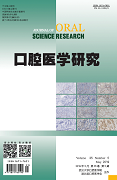|
|
Effect of Osteopontin on Polarization of Macrophage in Vitro.
FENG Li-hua, WANG Min, XIA Hai-bin, HUANG Kai-yao
2019, 35(5):
497-501.
DOI: 10.13701/j.cnki.kqyxyj.2019.05.020
Objective: To study the effect of exogenous osteopontin (OPN) on the polarization of macrophage in vitro. Methods: Mouse RAW264.7 macrophages were cultured in vitro, and divided into groups as follows: (1) OPN dose-dependent experiment: the experimental group were treated with 0.1,0.5,1.0 mg/L OPN respectively in vitro; (2) M1 polarization experiment: set control group, LPS group, OPN group, LPS+OPN group; (3) M2 polarization experiment: there were control group, IL-4 group, OPN group, and IL-4+OPN group. After stimulated for 24 hours, quantitative real-time PCR (qRT-PCR) was used to measure mRNA levels of M1-type genes inducible nitric oxide synthase (iNOS), tumor necrosis factor-α (TNF-α), interleukin-1β (IL-1β), and M2-type genes CD206, Arginase-1 (Arg-1), and interleukin-10 (IL-10). Western blot was used to assay iNOS and Arg-1 protein. The expression of iNOS and CD206 was detected by immunofluorescence assay (IFA). Results: mRNA levels of M1 and M2-type genes both increased significantly in a dose-dependent manner on OPN group (P<0.05). The expression of M1-type genes was the highest on LPS+OPN group, while expression of M2-type genes was the highest on IL-4+OPN group (P<0.05). The Western blot and IFA results were consistent with qRT-PCR results. Conclusion: OPN may induce M1 or M2 polarization of macrophage, and has synergetic effect with LPS and IL-4, as a pleiotropic cytokine.
References |
Related Articles |
Metrics
|

